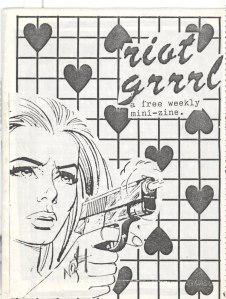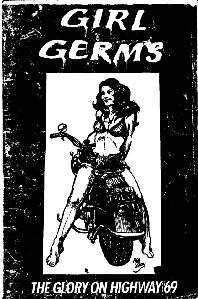By Alanna Why

Now that you are a bona fide zinester, let’s take a look at how zines originally started and developed. Fanzines are most commonly thought to have started in the 1930s with an early emphasis on science fiction. What most people generally recognize as the first zine, The Comet, was quickly followed by other publications devoted to similar material such as Time Traveler and Science Fiction. Zines like Scienti-Comics, a twenty page science fiction comic, followed in the 1940s, while underground newspapers like New York City’s Rat and Vancouver’s The Georgia Straight rose to popularity at the height of 1960s counterculture. Zines, however, really exploded during punk’s initial blast at the end of the 1970s. The punk aesthetic and ethos was crucial to the development of zines. Inspired by punk’s DIY philosophy, many realized that if they had something to say they could just write it down, photocopy it, and get their message out there. Some influential punk zines include the UK’s Sniffin’ Glue, Michigan’s Touch & Go, Los Angeles’ Slash and San Francisco’s Maxiumumrocknroll, which continues to be published today (they are currently at issue #352, an impressive feat considering most fanzines stop after issue #1!)

In the 1980s something new developed in the world of indie publishing: zines that were devoted
solely to reviewing other zines. Factsheet Five was one of the pioneers in terms of review zines and proved to be a great resource for zinesters in an age where the internet was just a dream (there are still several zines like this today, check out Zine World or Xerography Debt). Throughout the decade,
zines were given away for free, to friends, traded with fellow zinesters and pen-pals through the mail or sold at independent shops. Zines exploded for a second time in conjunction with the greatest by-product of the 90s: Riot Grrrl. Riot Grrrl gave women a voice for their frustration, confusion and alienation in the male-dominated landscape of the zine and punk rock worlds. Several prominent women of the Riot Grrrl era made zines, including Toby Vail (Jigsaw), Allison Wolfe and Molly Neuman (Girl Germs) and Kathleen Hanna (Bikini Kill, April Fools Day). Moreover, major contemporary feminist publications like Bust and Bitch originally both started out in zine form during the 1990s.

Zines, however, have seen a decline with the rise of the internet. For most people, it simply isn’t
worth it to spend hours handwriting, photocopying, stapling and folding a zine that might only reach thirty people when they can simply blog about it for free to a potential audience of millions. Moreover, trading zines with pen-pals has virtually become non-existent due to the death of the mail system and letters as a whole.
But not all hope is lost! The zine community still continues to thrive in the modern world, just in a
different way. There are still zine fairs, zine libraries and zinesters all around the world continuing to
contribute to indie culture. For example, Canzine, the largest zine event in Canada, features over 200
zine makers and countless workshops at its celebration of independent publishing each year.
Moreover, The New York State Library has a collection of over 10,000 zines. And lastly, We Make Zines, an online forum for zinesters, is a good example of how the internet can help the zine community. So keep calm everyone, support indie culture and read zines. Whether it’s the latest issue of Doris or a copy of Kurt Cobain Was Lactose Intolerant, there really is a zine for each and everyone.
Alanna is 17 years old and lives in Ottawa, Canada. She makes the zines “Puker Nation”, “Backwaves” and “Scoopin’ Times”.
